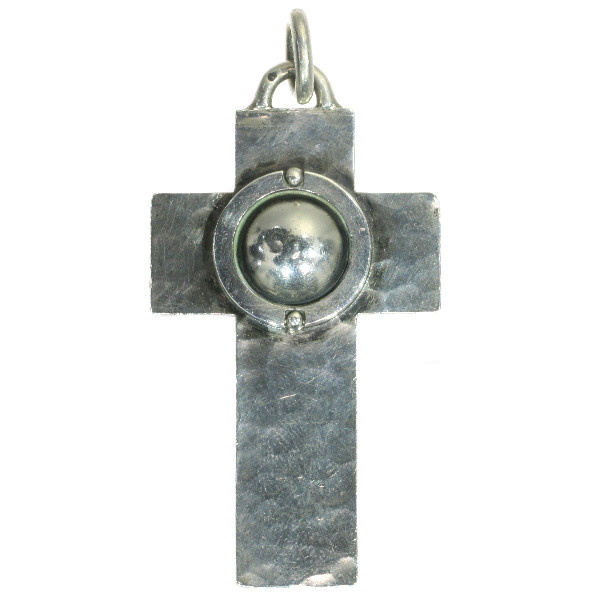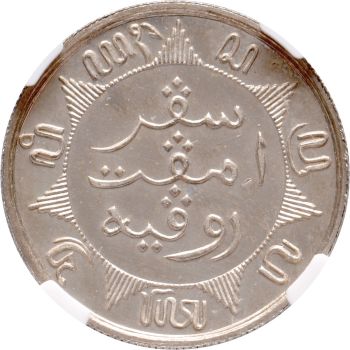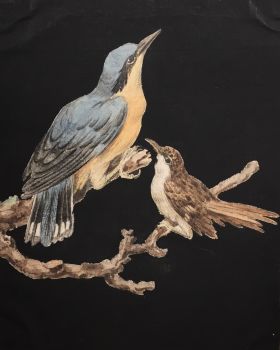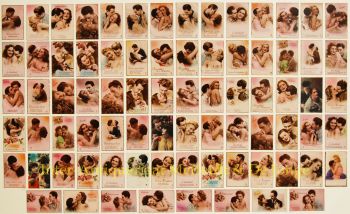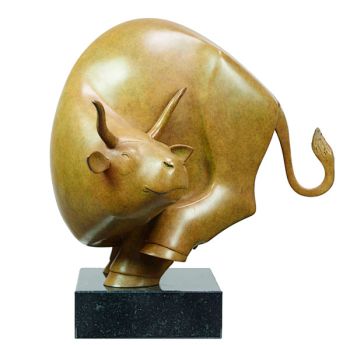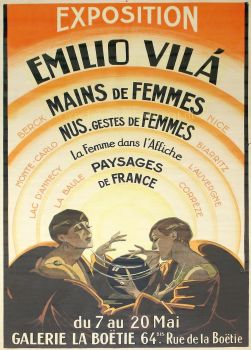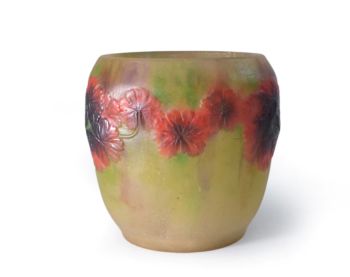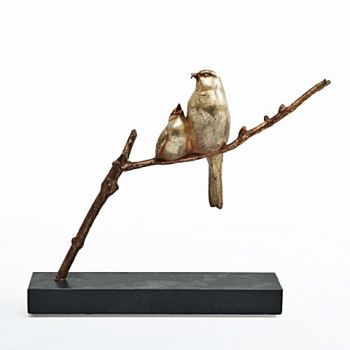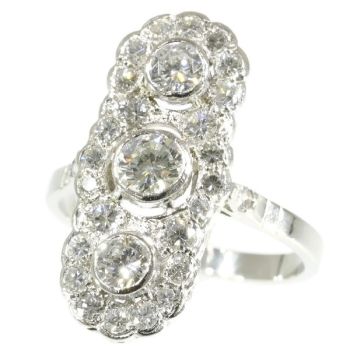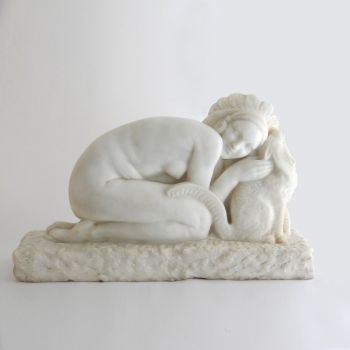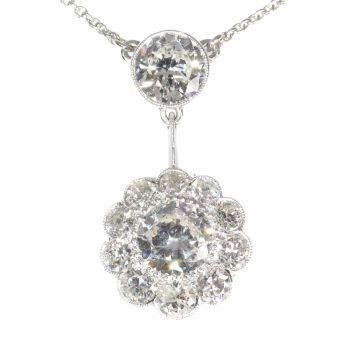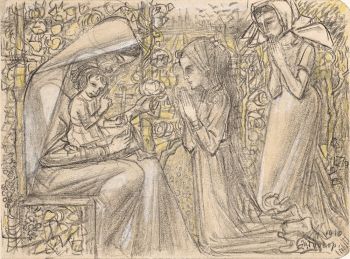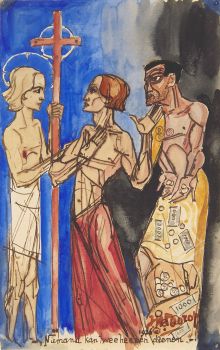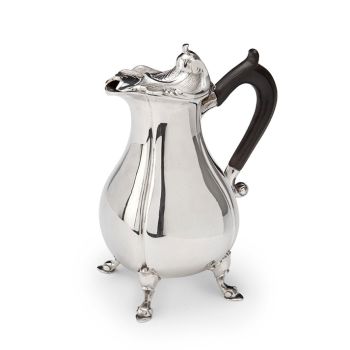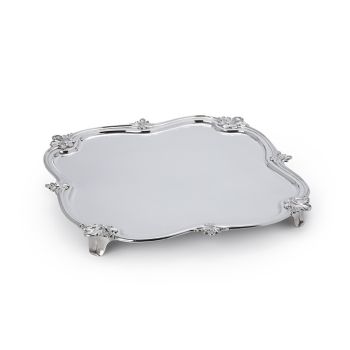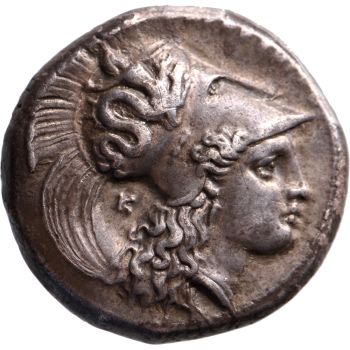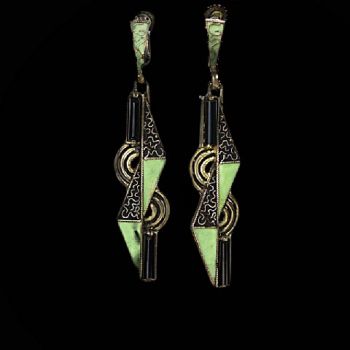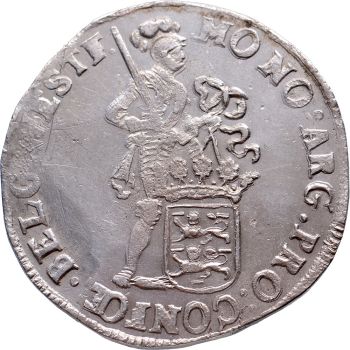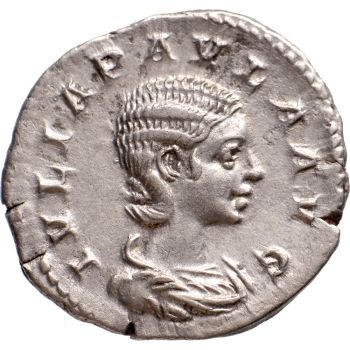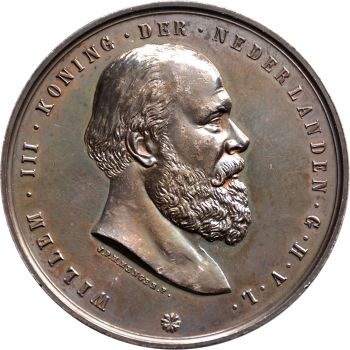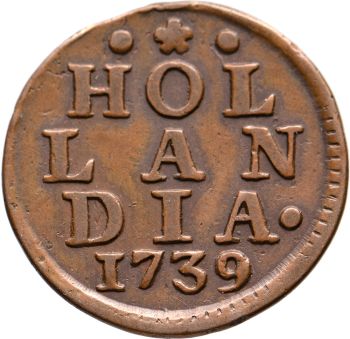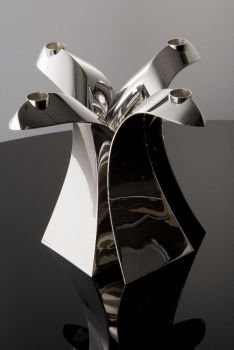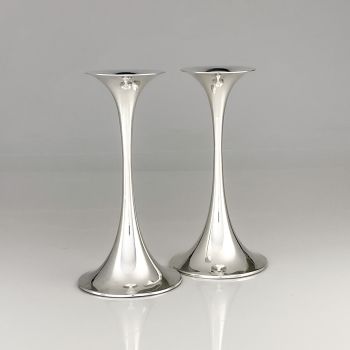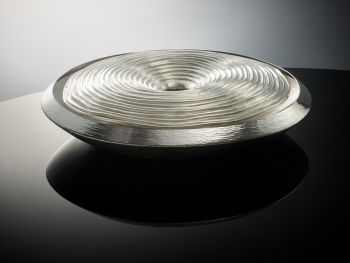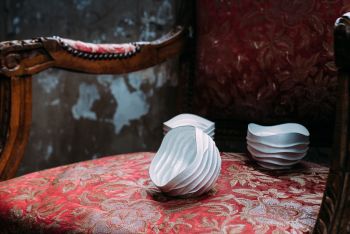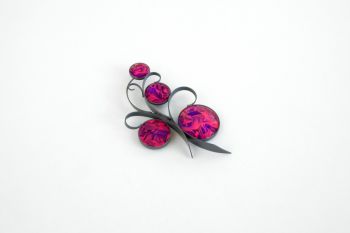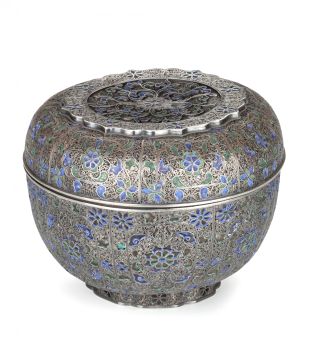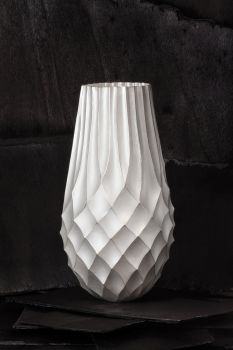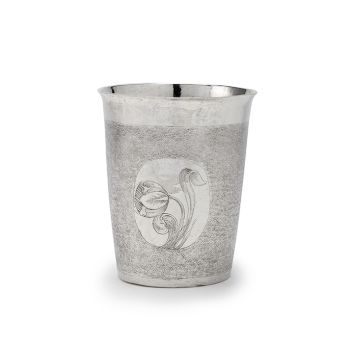Le créateur français Jean Després a signé une croix en argent 1950
Artiste Inconnu
Argent
Actuellement indisponible via Gallerease
- Sur l'oeuvre d'art
Antique jewelry object group: pendant
Condition: good condition
- (more info on our condition scale)
Country of origin: France
Style: Although most people would call this style Art Deco it is more considered to be a product of the fifties of the Twentieth Century. Strongly influenced by Art Deco but also by the Retro style. That to most people this is Art Deco is no coincidence as both Retro style and Fifties style are the style successors of Art Deco.or more info on styles
Style specifics: This type of jewelry is very specific for the fifties of the twentieth century. The Art Deco period preceded only 20 years and was still used as source of inspiration, it is (even for the trained eye) sometimes very hard to note the difference betweenArt Deco and Fifties.
Period: ca. 1950
- (events & facts of this era, poetry of this era, fashion of this era)
Source of inspiration: Christianity
Theme: Cross - The cross is one of the most ancient human symbols, and is used by many religions, such as Christianity. It is frequently a representation of the division of the world into four elements (or cardinal points), or alternately as the union of theconcepts of divinity, the vertical line, and the world, the horizontal line. (from: Wikipedia)
Material: Silver
- (more info on precious metals)
Extra information: Jean Després - Jean Després was an Art Deco jewelry designer whose name has come to stand for the most dynamic of 20th-century styles. This definitive celebration of his work will delight new admirers and seasoned connoisseurs alike.
Capturing the streamlined, modern aesthetic of the age of the machine and transforming it into objects of great beauty, Després has always been the jeweler of choice for informed collectors and insiders: Josephine Baker was an early admirer, andAndy Warhol’s collection was sold at Sotheby’s, New York in 1988.
As a young man, Després came to know avant-garde artists in Paris, including Léger, De Chirico and Braque. After the outbreak of war in 1914 he worked on the industrial design of aeroplanes, and he transferred this experience andinspiration into the jewelry business.
Després used geometric motifs in his designs, and in the 1930s embarked on a notable collaboration with the glass painter Étienne Cournault. Després went on to create a range of tableware and decorative objects in gold, silver andpewter, whose bold, industrial looks were uncompromisingly modern, yet always graceful and refined.
Many drawings and designs are reproduced here for the first time, showing Després’s creative process and, benefiting from a wealth of fine archive material, the original photographs are accompanied by a large number of new photographs takenspecially for the book.
From: Jean Després Jeweler, Maker and Designer of the Machine Age by Melissa Gabardi ISBN 9780500514788
Signature: J Despres
Hallmarks: The French control mark representing a "crab" that was in use in France from 1838 and used for silver objects made in France with an alloy of 800/1000.
- (more info on hallmarks)
Dimensions: height 7,40 cm (2,91 inch)
Weight: 31,70 gram (20,38 dwt)
Reference Nº: 17072-0075
Copyright photography: Adin, fine antique jewelry
- Sur l'artiste
Il peut arriver qu'un artiste ou un créateur soit inconnu.
Certaines œuvres ne doivent pas être déterminées par qui elles sont faites ou elles sont faites par (un groupe d') artisans. Les exemples sont des statues de l'Antiquité, des meubles, des miroirs ou des signatures qui ne sont pas claires ou lisibles, mais aussi certaines œuvres ne sont pas signées du tout.
Vous pouvez également trouver la description suivante :
•"Attribué à …." A leur avis probablement une oeuvre de l'artiste, au moins en partie
•« Atelier de …. ou « Atelier de » À leur avis, une œuvre exécutée dans l'atelier ou l'atelier de l'artiste, éventuellement sous sa direction
•« Cercle de… ». A leur avis une oeuvre de la période de l'artiste témoignant de son influence, étroitement associée à l'artiste mais pas forcément son élève
•« Style de … ». ou "Suiveur de ...." Selon eux, une œuvre exécutée dans le style de l'artiste mais pas nécessairement par un élève ; peut être contemporain ou presque contemporain
•« Manière de… ». A leur avis une oeuvre dans le style de l'artiste mais d'une date plus tardive
•"Après …." A leur avis une copie (quelle qu'en soit la date) d'une oeuvre de l'artiste
•« Signé… », « Daté… ». ou « Inscrit » À leur avis, l'œuvre a été signée/datée/inscrite par l'artiste. L'ajout d'un point d'interrogation indique un élément de doute
• "Avec signature ….", "Avec date ….", "Avec inscription …." ou "Porte signature/date/inscription" à leur avis la signature/date/inscription a été ajoutée par quelqu'un d'autre que l'artiste
Artwork details
Related artworks
- 1 - 4 / 12
- 1 - 4 / 24
Fontana
Broche-pendentif panier de fleurs1900 - 1905
Prix sur demandeAns Hemke-Kuilboer Juwelier & Antiquair
1 - 4 / 24- 1 - 4 / 24
Artiste Inconnu
Bécher hollandais en argent XVIIe siècle1653 - 1677
Prix sur demandeJacob J. Roosjen SRI
1 - 4 / 24


